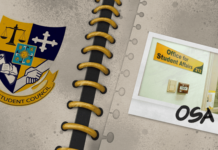WITH the expectations of the University and its mission-vision statements in mind, professors take on the task of mentoring and forming students. However, most are also mindful that their work is, more often than not, Herculean, what with standards that must be maintained, or surpassed if a promotion is desired. Even the title “professor” is technically inapplicable to all teaching personnel. Like in a corporate ladder, everybody must start at the bottom. “A faculty member cannot be promoted if he or she lacks competence in teaching”, Dr. Crestita Tan, director of the Office of Faculty Evaluation and Development, told the Varsitarian.
Criteria for reclassification and promotion
On the other hand, according to Dr. Armando De Jesus, vice-rector for Academic Affairs, “reclassification” is different from “promotion to another rank.” Reclassification, which covers two months prior to the passing of applications, involves a movement in the same rank (instructor 1 to instructor 2). Except in the Ecclesiastical Faculties, Graduate School, grade school and high school departments, rules in faculty classification are the same in all other colleges and faculties.
There are four parts in the criteria for reclassification and promotion to another rank: academic preparation, experience and training; teaching competence and deportment; research and creative works; and community or extension service. In each, there are details that an applicant for reclassification should meet to gain points for the overall percentage. Aside from the required bachelor’s degree, one should have a post-graduate degree or a licentiate in an ecclesiastical degree for extra points. Government examinations, experience in teaching in and out of the University, administrative positions, non-degree trainings, also boost an applicant’s chances. In the second criterion, the effectiveness in teaching, personal and social qualities are measured. The evaluations of the dean, faculty council, department head and/or an ad hoc committee are taken into account. Moreover, the students’ survey or evaluation is considered.
As for research, the applicant should have produced scholarly works, published articles, textbooks, full-length books, and patented scientific inventions. For teachers of visual arts, literature, and music, creative works are also considered. Course modules and online courses designed are also part of the point system.
During the evaluation process, when a faculty member reaches the cut-off percentage range required of the rank, he or she is eligible for reclassification or promotion.
“Ranks are basically equated with their salary. The higher your rank, you are more competent, you have stayed longer in the University, and you are qualified to be elevated to a higher position,” Dr. Tan said.
There have been changes in the system through the years, which depends on the negotiations between the UST Faculty Union (USTFU) through the collective bargaining agreement (CBA). Beginning academic year 2001-2002 until 2005-2006, even in the absence of a master’s degree, an instructor may be recommended for promotion to the rank of assistant professor if the requisite points are reached. Likewise, an associate professor can be promoted without a doctoral degree if he or she meets a required number of points.
Delegating Body
“We have regular promotion and evaluation every two years, odd years are for evaluation and even years are for promotion,” said Dr. Tan. The Permanent Committee on Faculty Classification (PCFC), headed by De Jesus together with two college deans and the president of the USTFU evaluates the applications for reclassification or promotion of academic teaching personnel.
PCFC determines whether the applicant reaches the percentage range required of the class or rank. The Academic Senate, comprised of college and faculty deans, takes part in deciding on the applicants’ promotion to a higher rank. These are endorsed by the respective deans of the applicants, who forward them to the PCFC for evaluation and review of documents. When the overall rating reaches the minimum percentage required of the rank or class, a faculty member will be automatically promoted or reclassified. Promoted teachers are given additional benefits, such as extra pay for the regular units handled, privilege in holding administrative positions, and hospital benefits.
“The system and software programs sometimes miss to record scores encoded by evaluators online,” said Dr. Tan. Because of this, the evaluation and promotion in 2006 and 2007 will be delayed.
Statistics
According to the Office of Faculty Evaluation and Development, during the second semester of 2005, the highest portion of the faculty population went to assistant professors. A total of 475 were recorded, 28.79 per cent of the total of 1,650 teaching personnel. This proves that a large number of faculty members are either promoted to assistant professors or have stayed longer within the rank. On the other hand, full professors got the smallest parcel, only a total of 97, or 5.88 per cent of the total percentage. The biggest number of full professors, 61 out of the total ratio, is in the Faculty of Medicine and Surgery.
Directed by the vision of the University, all faculty members are expected to uphold the core values of competence, commitment, and compassion. Although classifying teaching personnel into ranks can determine academic teaching experience and efficiency with the job, the question still rests on whether having a post-graduate degree and a high rank ensures good quality in teaching methods and practices.










